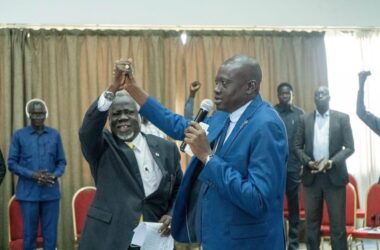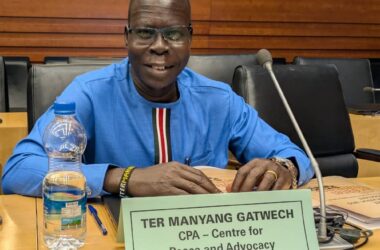
By Akol Madut Ngong
Over 90% of the population of South Sudan is within the Nile Basin according to a research survey on water management, conducted by the PhD student at Oxford University in London from the department of geography and environmental science.
The fraction was mentioned during a public awareness, and consultation on Sudd Wetlands and the White Nile water resources under the theme: “No Life without Water”; Develop and Manage the White Nile Water Resources and the Sudd Wetlands.
The forum was organized by the Sudd Institute and the White Nile Water Resources Development and Management Initiative.
One of the researchers, Deng Majok Chol a PhD student at the Oxford University said it is important for South Sudan to recognize that 90% of its population is along the Nile Basins.
He said the meaning of Bahr el Ghazal originate within the nation, and that implied that South Sudan has full right on the Bahr el Ghazal Basin because that water originates within the country.
“The population of the Nile is 487 million people of the eleven countries and 50% of this population are eventually dependent on the Nile water for the economic and the domestic system, the population is growing rapidly, so what is going to happen, they are going to depend on the water for their agricultural production, they need to feed the population for food security,” Chol said.
Mr. Deng Majok Chol said that 90% of natural disaster are weather related including flood and drought, adding that this phenomenon is affecting the whole world.
He said the number of people at risk from flood is projected to 81.6 billion by 2050 with 45 trillion duly of assets at risk.
The researcher further stated that Sudd receives water from the Equatoria lakes, directed from Lake Victoria coming from below, also receives water from Bahr el Ghazal inflow, and water loses 30 million cubic of water per a year.
He stated that when they talk about loses in the literature, they believe it is the water that goes into the atmosphere through evaporations, but loses also include community use for pastoral services, for the production of agriculture and domestic users.
Mr. Deng said people of Jonglei, Upper Nile, part of Lakes state, Unity state and part of Equatoria are also affected by flooding.
“If you go there to tell someone is drowning, or someone whose cattle killed by flooding, and you tell them that you need to wait, we need to picked out the better solution to control this water. They may not listen to you because their survival is really in questions, the live is imbalance but also is important to remind them of the upset phenomenon and that is drought”.
He said it was estimated that by 2050, 3.9 billion people which is 40% percent of the world population will live in river basins under severe water stress.
He added that 3.9 billion people which half of the world population will live under severe water stress.
Deng said the condition of rainfall varies in the Sudd basin between zeros in some places that rarely rain such as Egypt, if it rains once or twice a year is a luck.
Deng Majok has highlight that there are two people in the Nile today that are not cultivating because of too much water, and that their family cannot cultivates and they are facing food security but, someone in a drought cannot cultivate this year because of drought. There is no rain at all, why? We have these two dynamics that is why it is important to take a break.
“we need to analyze, we need to think how, we need to see what we will do to this person that has been not cultivated because of the too much water and to take some of the water from that place so is water least there and that person can cultivate and then the access of the water to the person who is not cultivate because of the drought so that they have water, we need to pick that out first before we decided to channel water somewhere else from one part of the basin,” Deng stated.
“The histories has to be learnt, there are three histories drought and flooding have occur alternatively over the years, the will continue to be and when we are addressing the issue of water management, let us approaches from these two upset problem that we are address to come out with the solution of these two problem that can address both drought and the flood,” he added.



